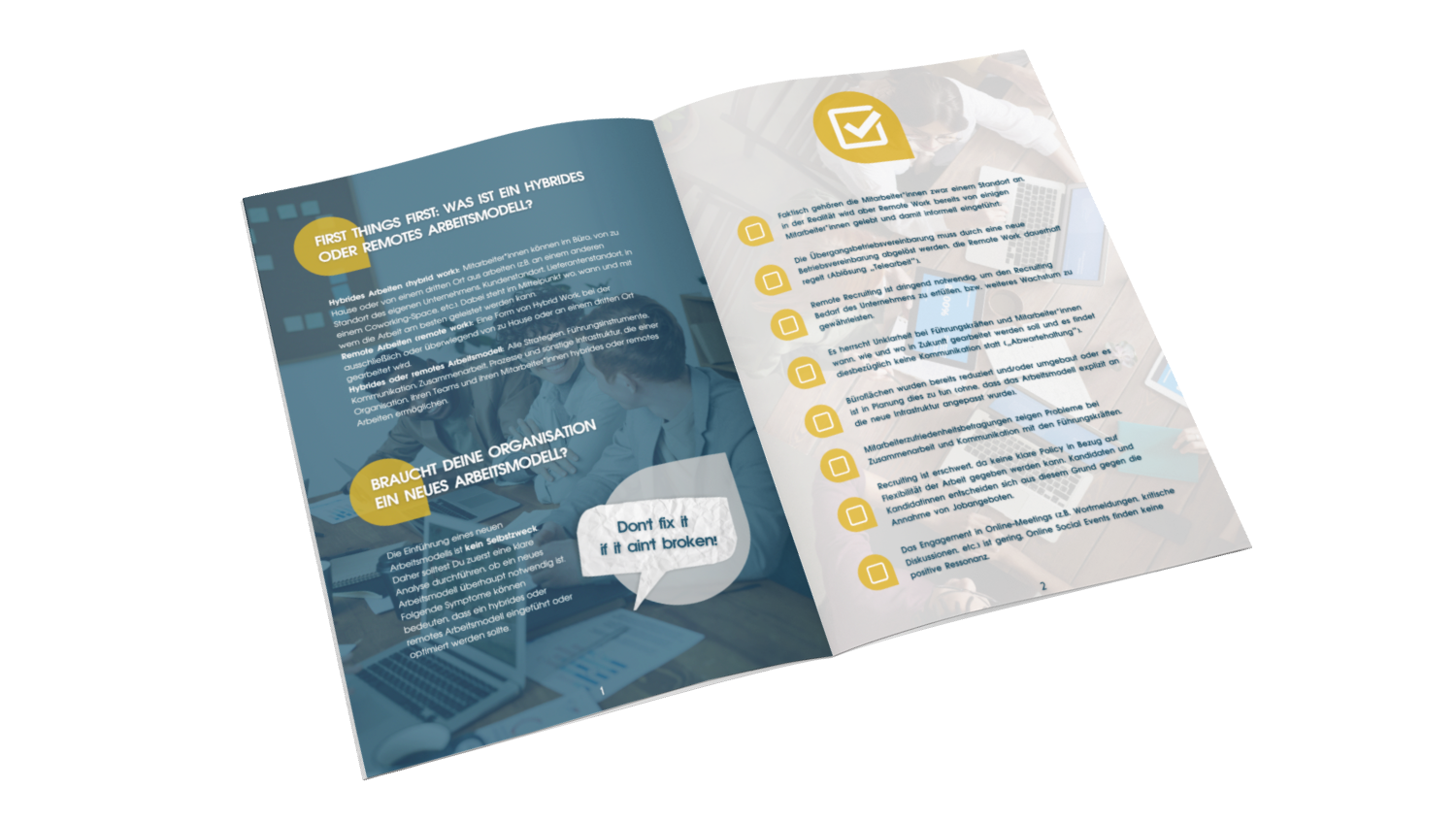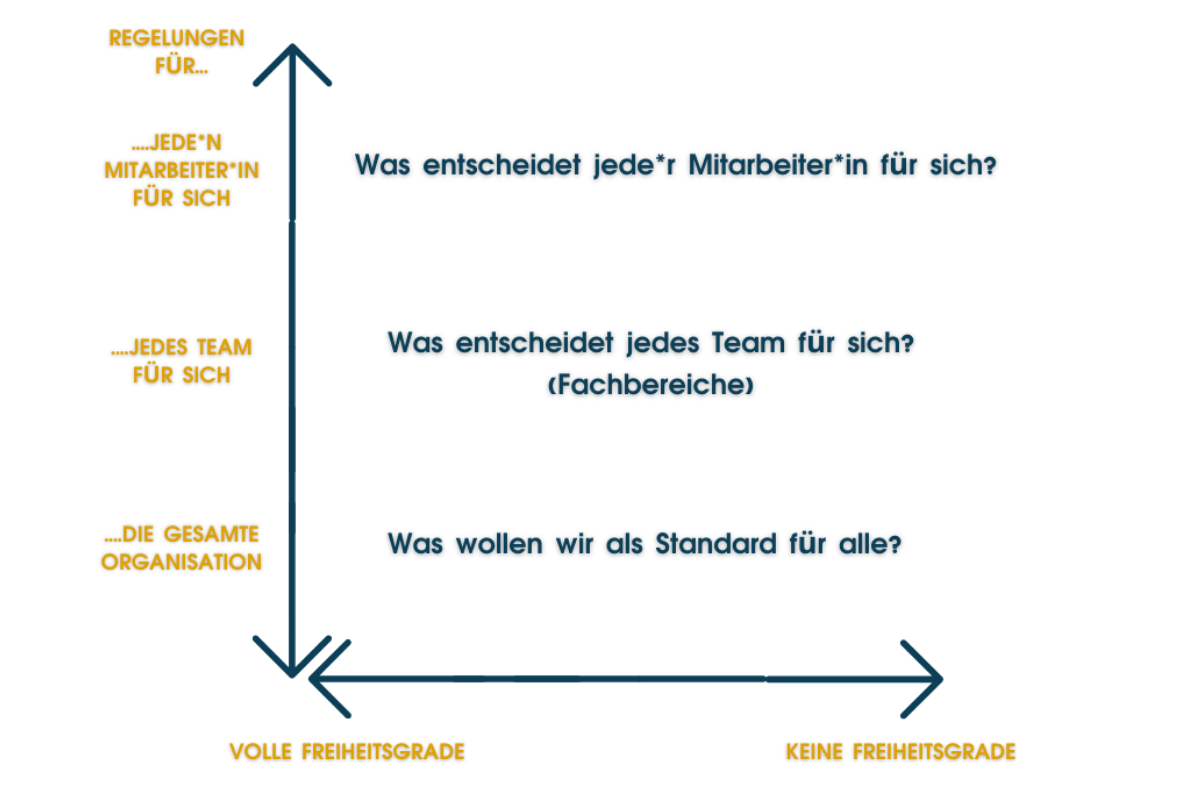
The pandemic turned the working world upside down for once. Work processes had to be changed quickly, employees were sent to the home office without further ado, and collaboration fell by the wayside - the main thing was to keep the system running for the time being! More than two years have passed since then. There is no longer any "going back" and many companies are asking themselves: Do we need a new working model?
New working model? If it ain't broken, don't fix it!
First of all, let it be said: The introduction of a new working model is not an end in itself. If the "shop is running", there is no reason to turn the organisation upside down. Therefore, a comprehensive analysis of whether a new working model is needed is indispensable. The transitional company agreement has had its day and now it is time to look at factors such as communication, working spaces, employee satisfaction and recruiting. By the way, we have summarised symptoms that can be used to measure this need for change as a checklist in our workbook "Roadmap to Hybrid". Have alook here .
 Do the employees in your organisation actually belong to one location, but have been working from anywhere for a long time and have therefore already introduced informal remote working?
Do the employees in your organisation actually belong to one location, but have been working from anywhere for a long time and have therefore already introduced informal remote working?- Is there a general lack of clarity about how, when and with whom cooperation will take place in the future?
- Perhaps you notice a tense atmosphere and critical comments from your colleagues about the current collaboration? Or the engagement in online meetings leaves a lot to be desired?
These are examples of phenomena that indicate the need for a new working model. You can find more on this in the checklist in the workbook. The symptoms are of course manifold and individual - what do you notice in your organisation in terms of changed processes and moods?
New working model, yes! But how?
The realisation that a new working model has to be designed is the first important step. However, this is followed by the decision on what exactly this model should look like and, in particular, how it will be implemented in everyday work. In doing so, many organisations encounter problems and challenges. The biggest mistake in defining a hybrid or remote collaboration model is to decide "by instinct", for example, on a minimum or maximum number of office days. Such decisions have been made in droves in recent months. Simply to decide something at all and to give the employees a - supposed - framework again. However, the design must be built on a stable foundation, based on the purpose and goals of the company, and not on creeping stopgap solutions or the pressure to maintain control.
The real question is: what degree of freedom for "when, where, how and with whom" does an organisation want to give its employees? How centralised or decentralised should this guidance be?
Guidance needs a second dimension
During the initial stages of the pandemic, many companies placed a very strong emphasis on business continuity and tried to implement maximum degrees of freedom. For many companies, this represented a 180-degree turnaround from the previous regime. The task now is to bring both positions back into a healthy balance. The System will regulate itself - the only question is how. We need a balance between the optima of all individuals and the optimum of the team or organisation. So it is not enough to decide on basic degrees of freedom: how many days must employees come to the office and how many home office days will be granted? The second dimension must define the rules for each level - staff level, team level and organisational level. What does each employee decide for him/herself? What decisions can a team or department make? What do we want as a standard for the whole organisation?

Introduction process of a hybrid working model
In our workbook "Roadmap to Hybrid" you get a blueprint for the introduction of new work processes. The milestones that await you in this generic roadmap and how you deal with them are also explained. By the way, you can use our Company Quick Check to find out where your organisation is in this process.

